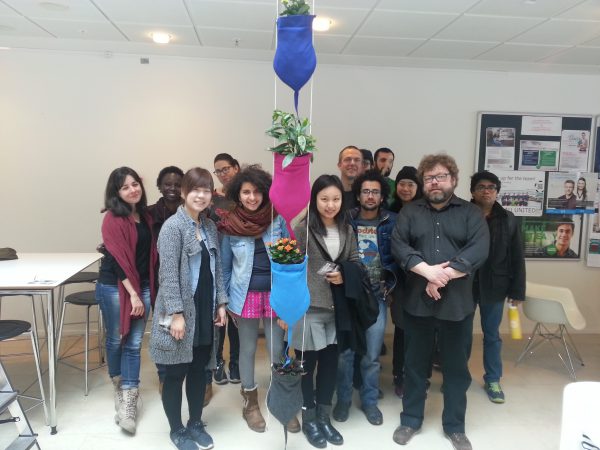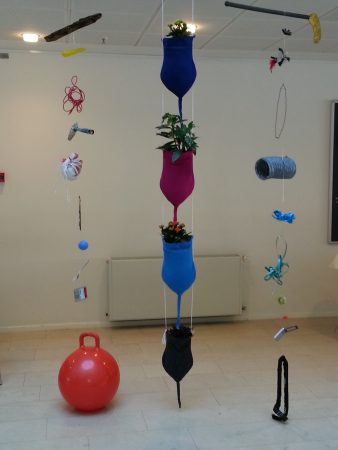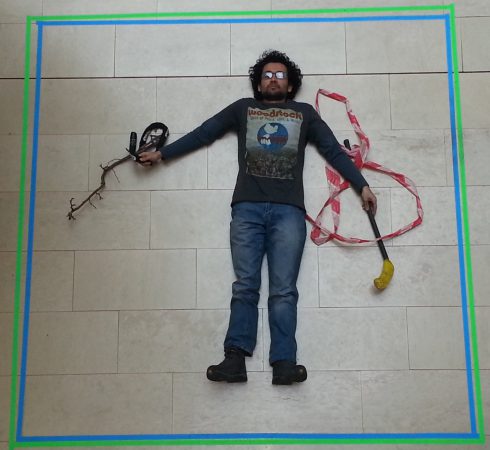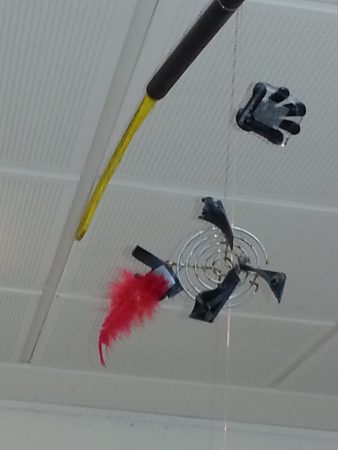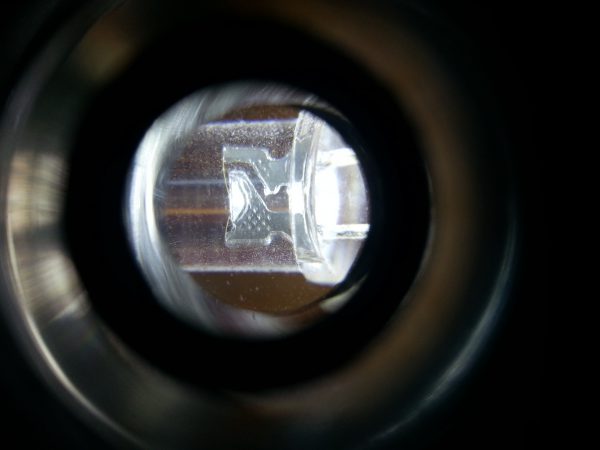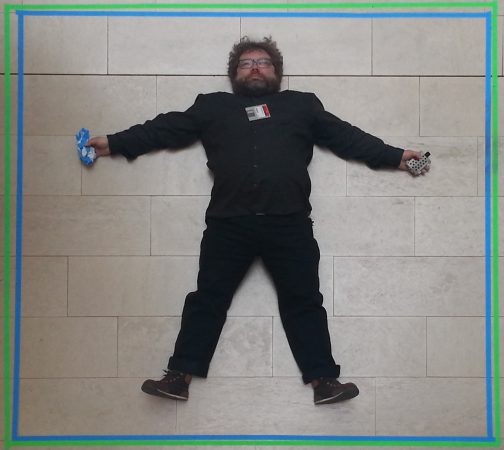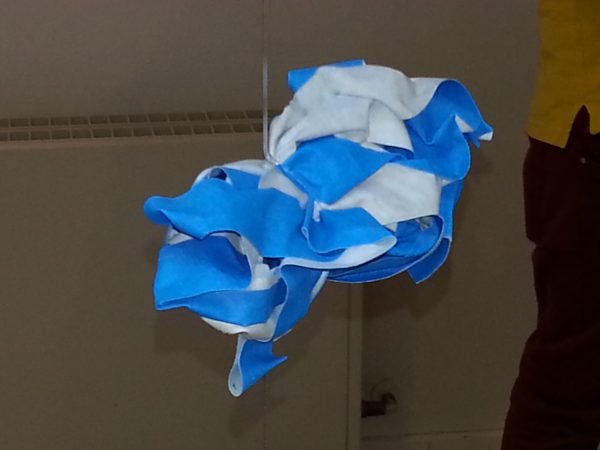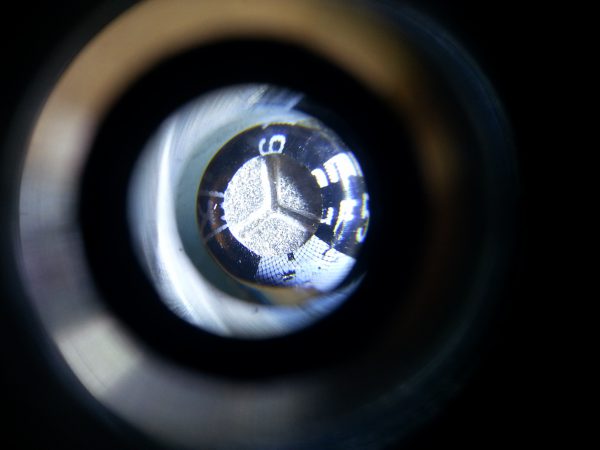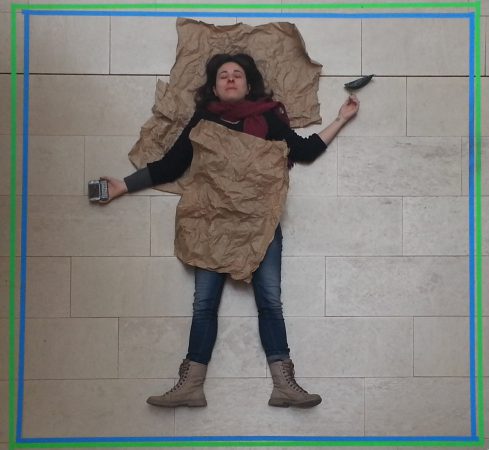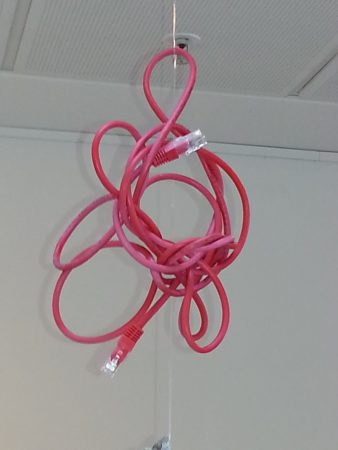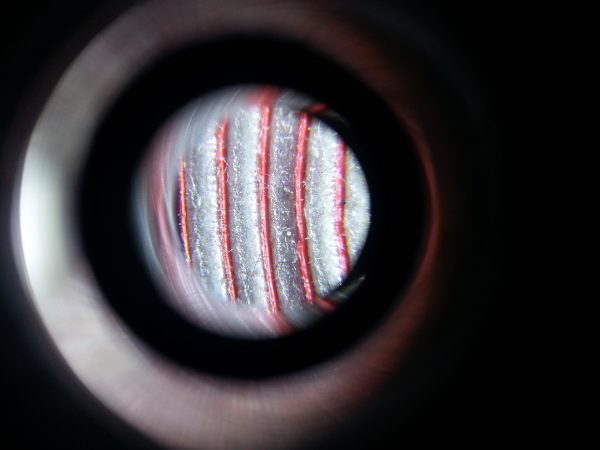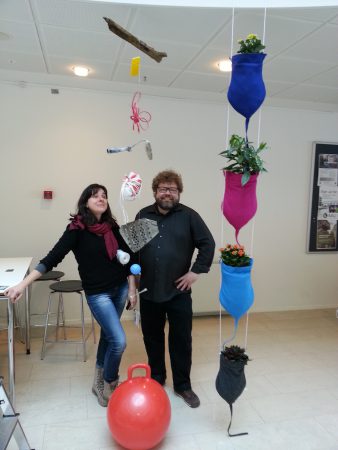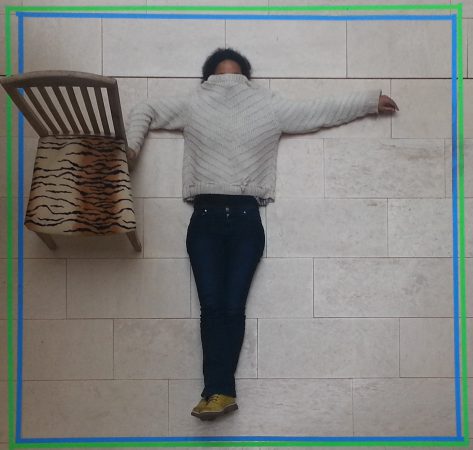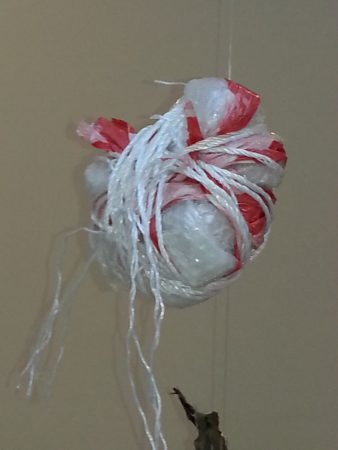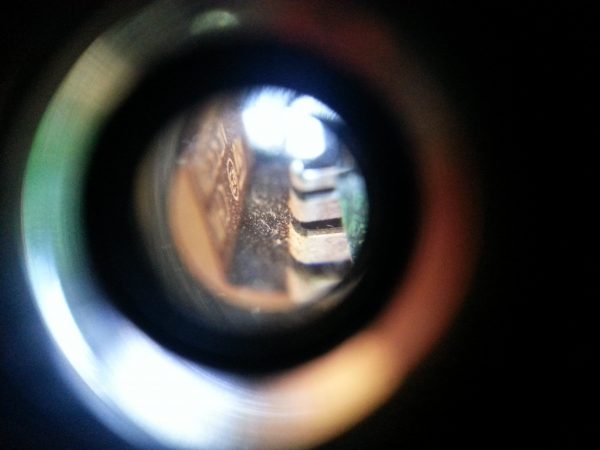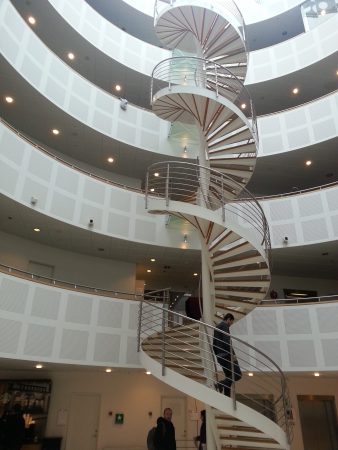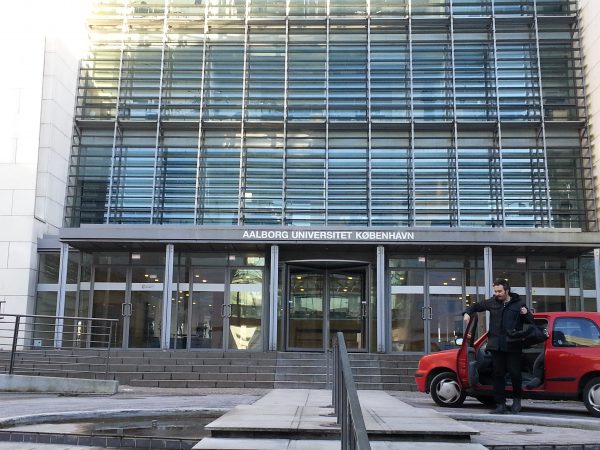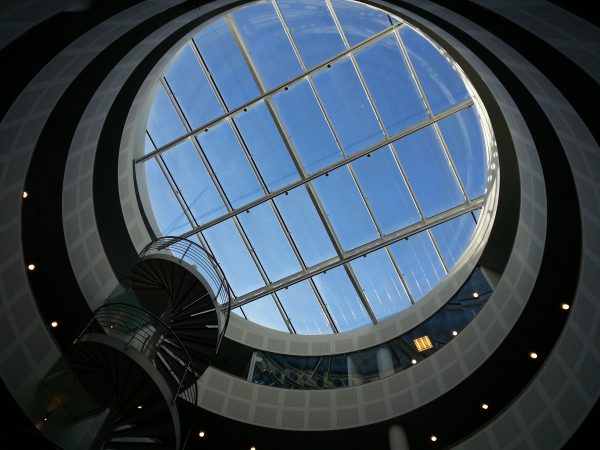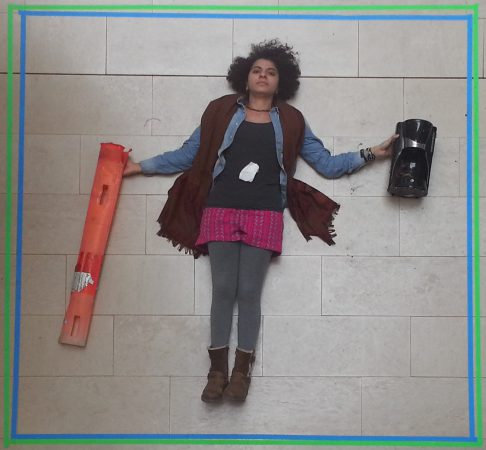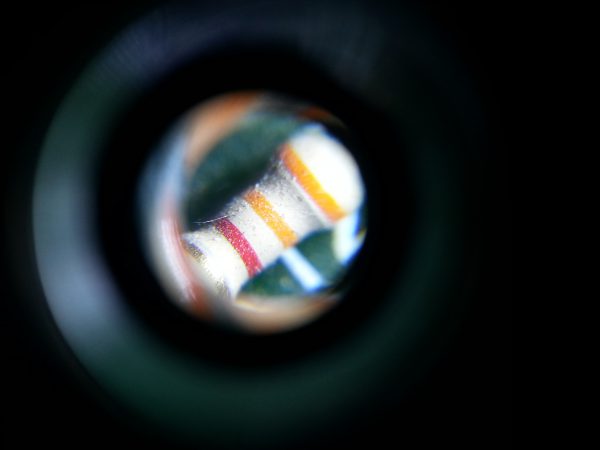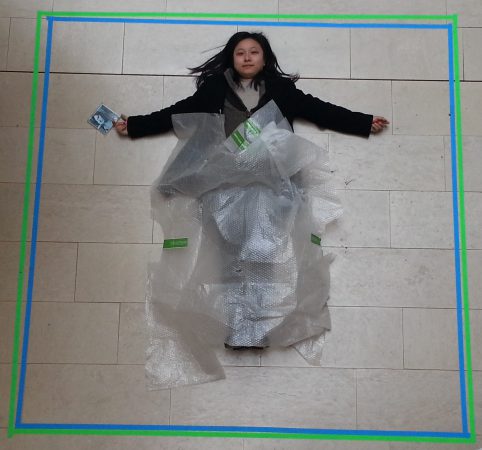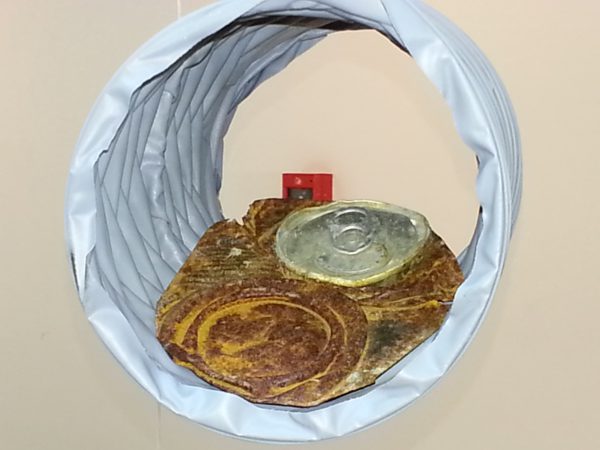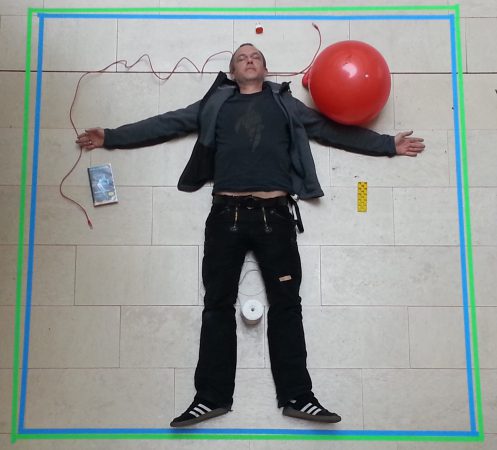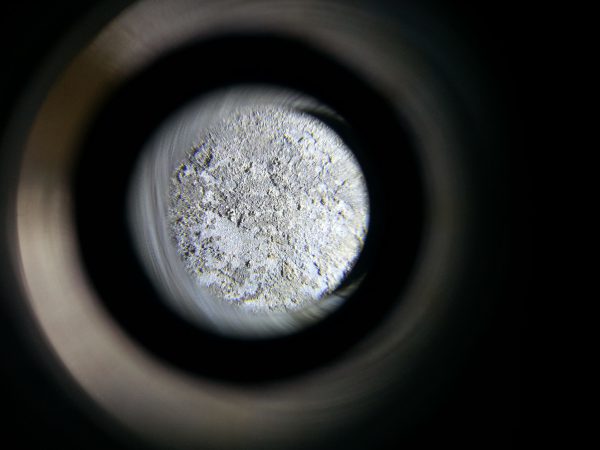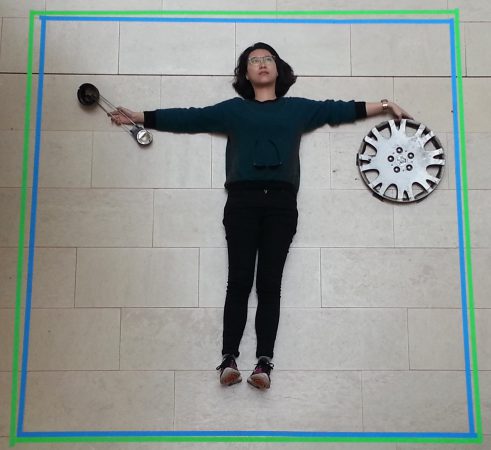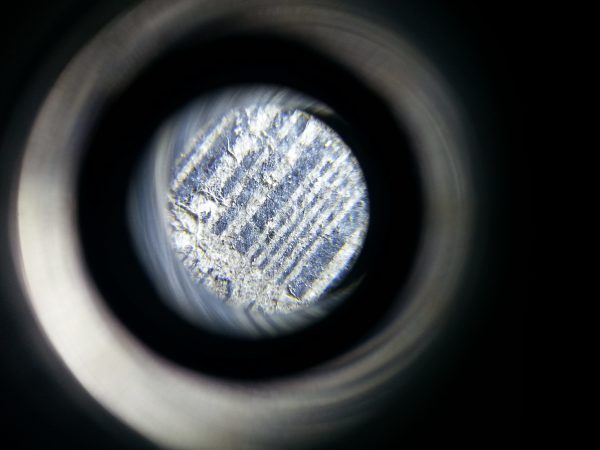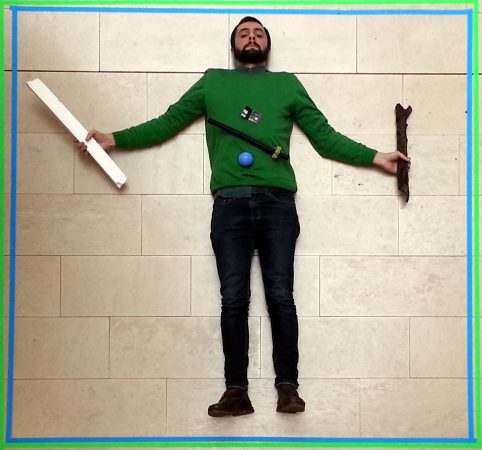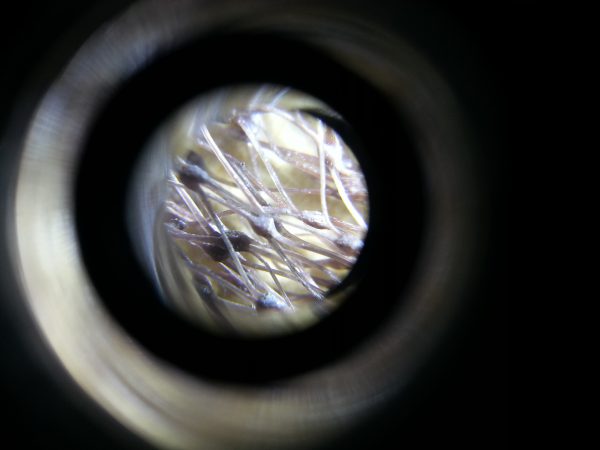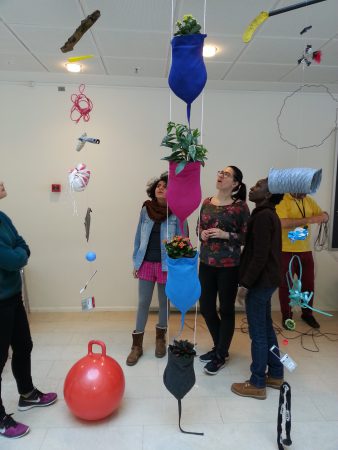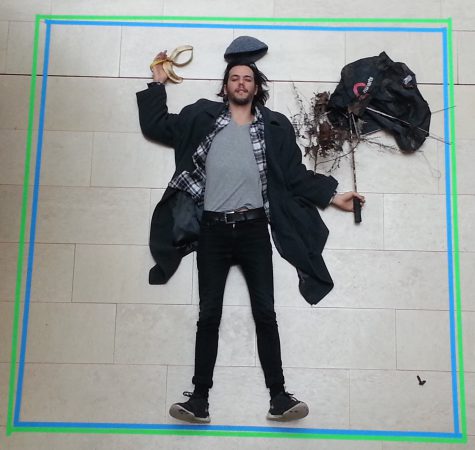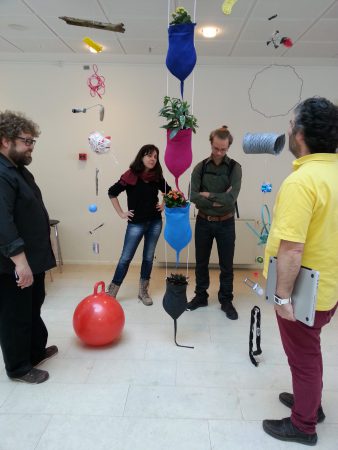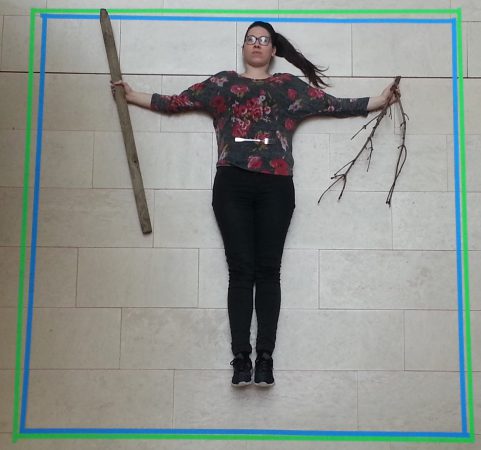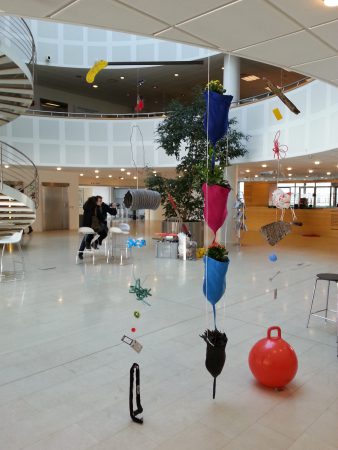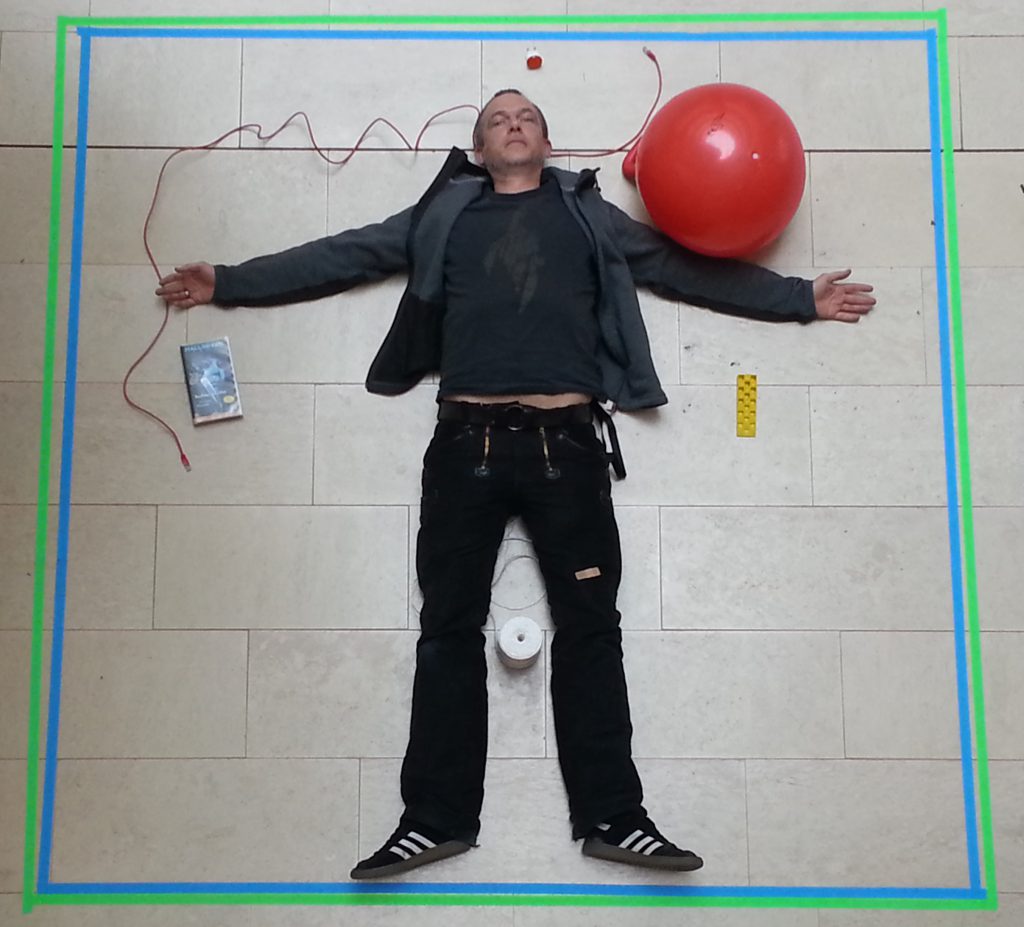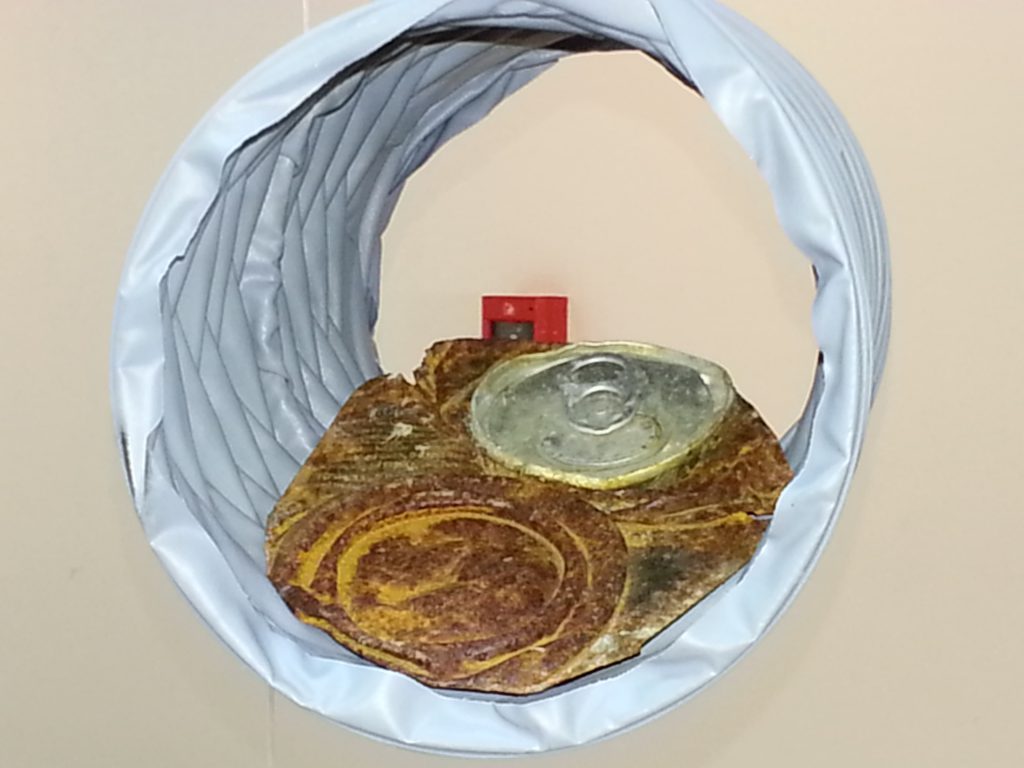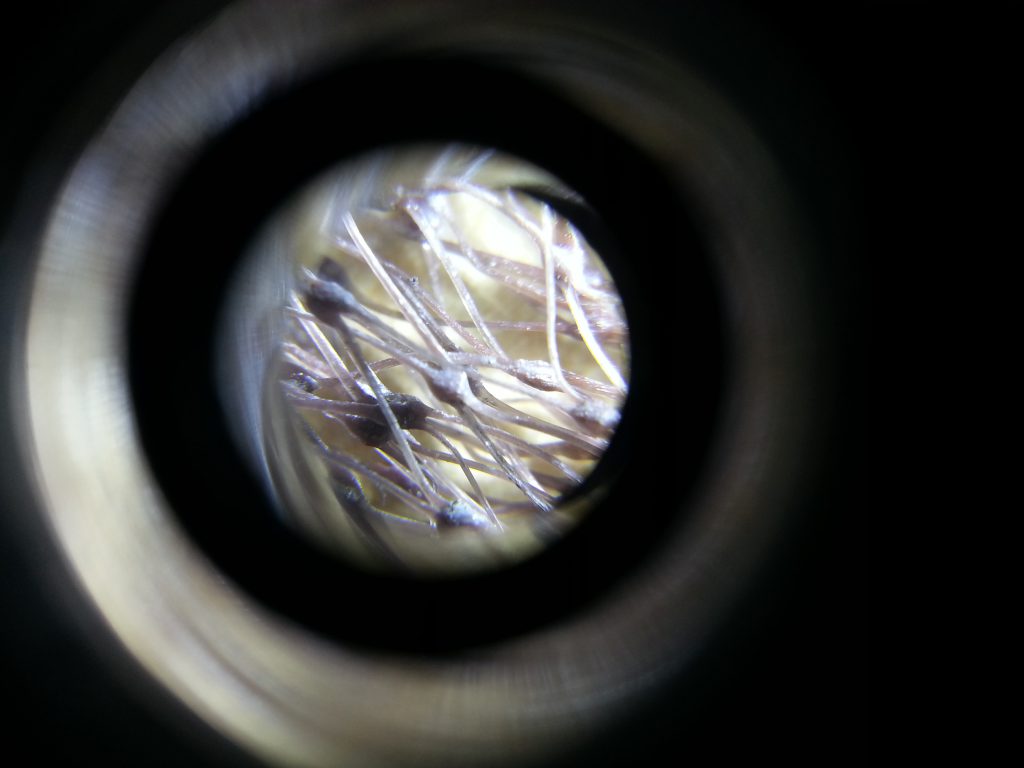Imagine a cave – where meter-long stalactites hang from moist cave ceilings, growing for thousands of years with accreting minerals – drip by drip. Imagine the same cave except one that is bright and open to the air instead, these stalactites are created by human activity and consumer demand, consumption, and waste cycles.
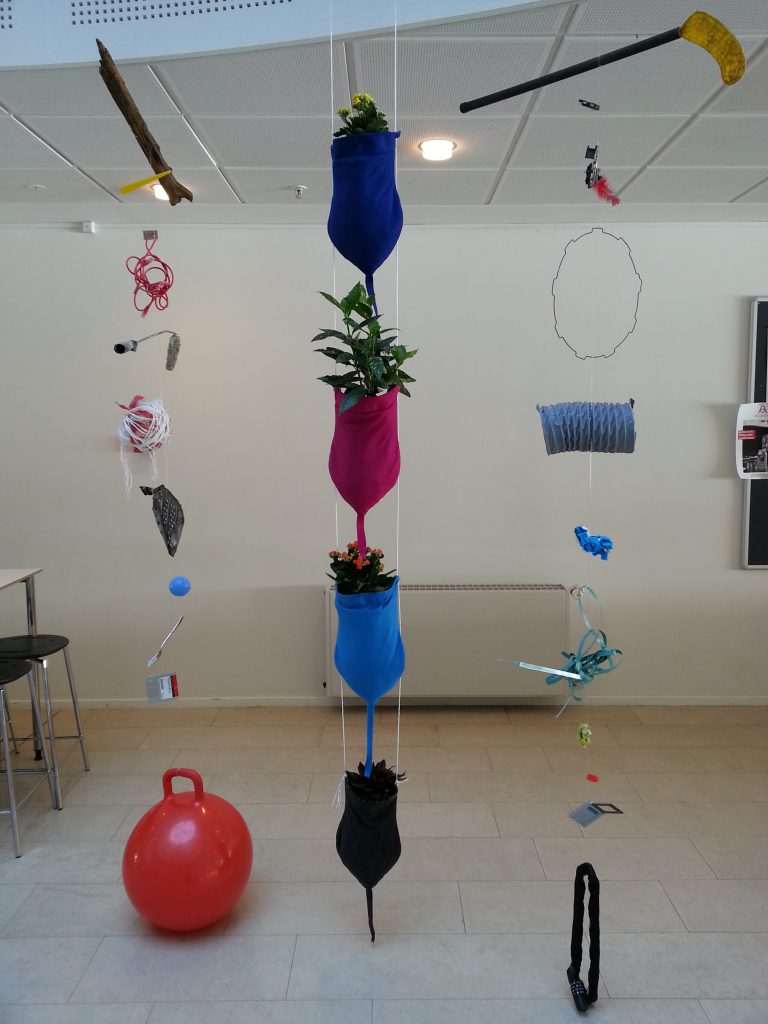
Human Made Stalactites is a crowdsourced artwork that premiered at and is now in the collection of Aalborg University, hanging in the building’s rotunda. These stalactites constructed of plastic, metal, and bits of tape were collected by students and professors from the streets of Copenhagen and Alborg building refuse bins. Waste electronics, wire, bouncy child balls, metal shards from cars, ductworks interspersed with natural plants in custom grow bags made with recycled PET plastic bottles.
With human activity dumping refuse in oceans and on land, the layers of human-environmental effects are visible in this work. The tens of thousands of years of anthropogenic activity and stalactites: “to-drip,” meaning “that which drips,” is also a type of information that hangs from the ceiling (revealing our wants, dreams, and desires). The recent trajectory of robotically empowered production and human mass consumption adds to this constant dripping and accretion.
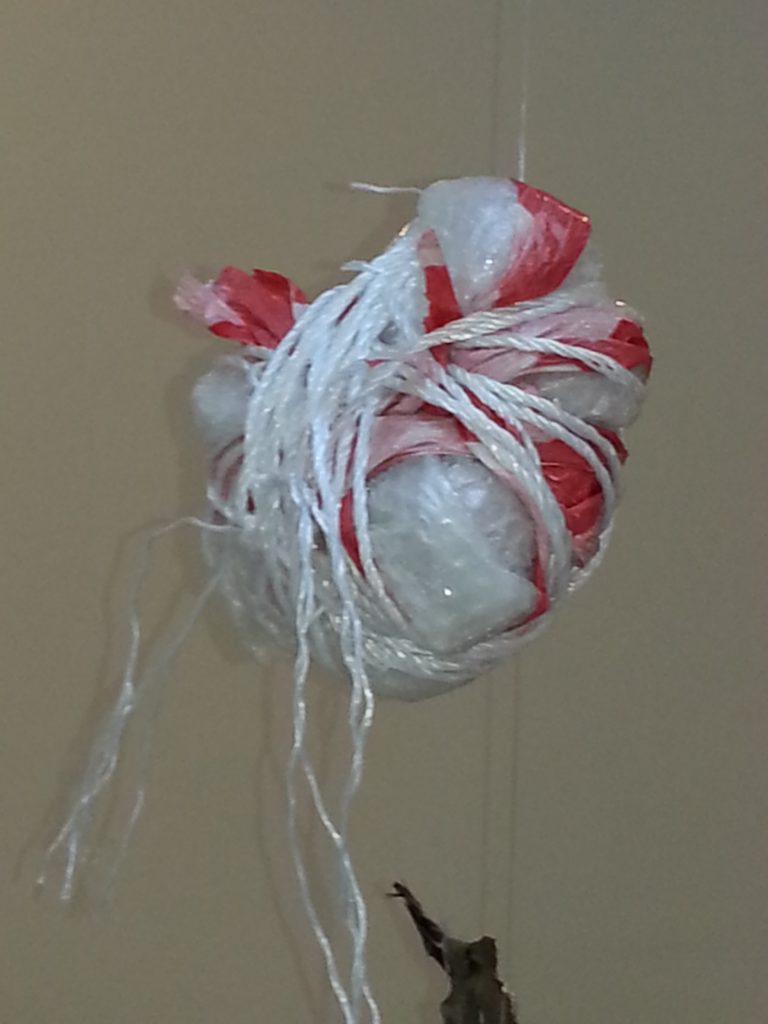
In nature, stalactites grow from amirite, lava, minerals, peat, pitch, sand, etc. Now we see anthropogenic ones, composed of electronics, plastics, leachate from dumps, and layers of plastics eaten by birds and fed to their young.
Plastics are dripping and penetrating the collective body of animals, plants, humans, and earth as they have entered our food supply with fish. The plasticizers from plastics possess estrogenic chemicals and are proven to impact cancer rates in people and the sex of fish in oceans. All fish and frogs are becoming a bit more “feminine.”
Before we realize what has happened, a new species may arise; reorganizing our cultures and communications and posing further questions about what is driving technological evolution. Who gets to ask those questions? Who gets to introduce these chemicals to our environment, and why should they be allowed?
Should artists have access to the powerful tools of our industrial society, or can we also help to ameliorate the effects of human consumerism?
Anthropogenic Stalactites are structures left behind by current industrial waste aggregates collecting themselves. By presenting them in this space, we are reminded daily of human impact on the natural living systems surrounding us as we accidentally and mutagenicity create a new species.
I did not realize when I made this work its connection to some of the early works of Robert Rauschenberg, with his trash-collecting at the Black Mountain College, where he gained a reputation for collecting scrap materials during garbage duty and turning the chores into a discovery expedition. There is value in the garbage to the artist.
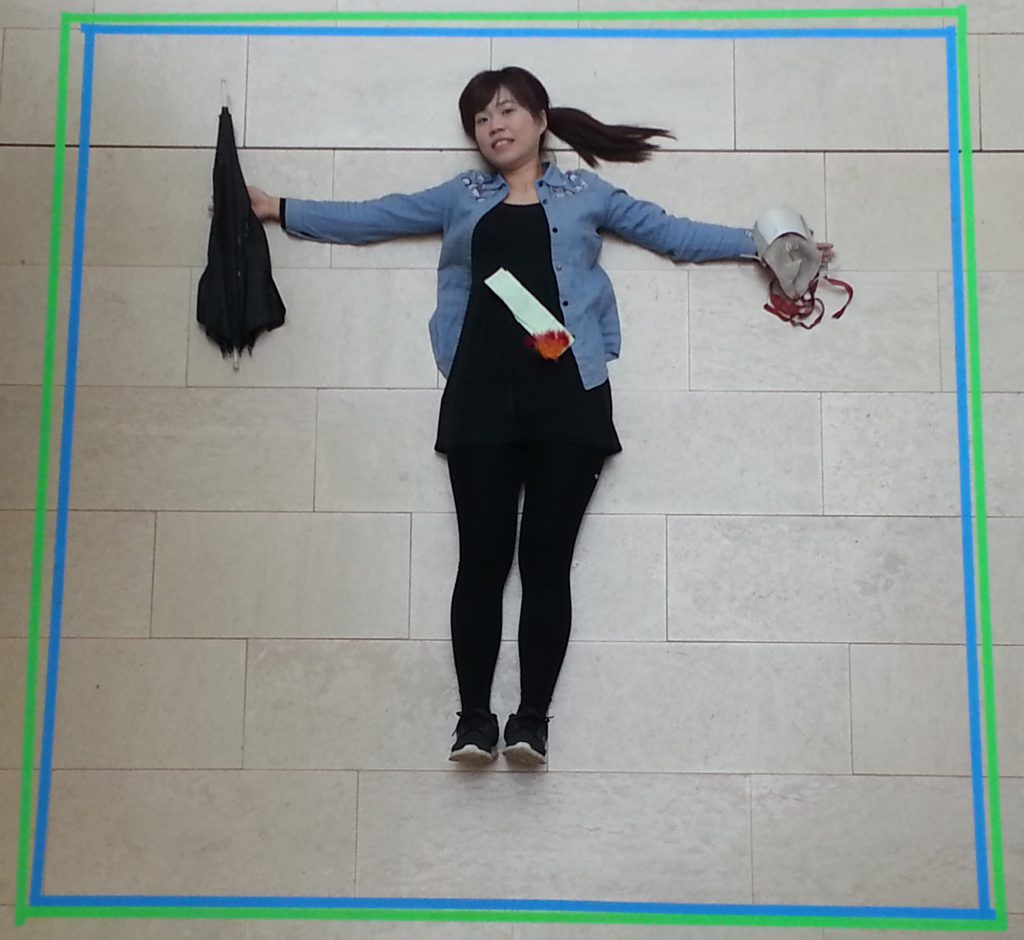
Part of this project is to photograph each participant holding the waste they have collected to realize both our complicities in making the waste and our power to remove the debris and take charge of where and how it is re-used.
Additional micrographs of the bits collected are also presented here to focus on the micro-level and consider molecular and mutagenic effects on our collective natural living systems.
Heather Davis and Etienne Turpin’s book Art in the Anthropocene: Encounters Among Aesthetics, Politics, Environments, and Epistemologies brilliantly captures writings and art surrounding humans’ deleterious impact on the environment.
Exhibitions/Collection
AALBORG UNIVERSITY, Copenhagen, Denmark, March 14-18, 2016
Production of the Anthropogenic Stalactites curated by Morten Søndergaard and supported by Aalborg University.
